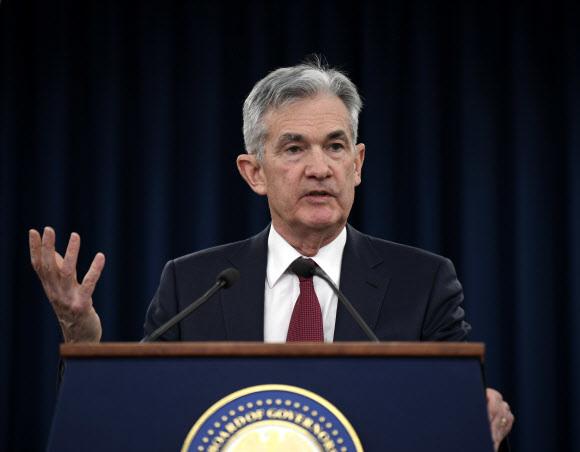 |
|
US Federal Reserve Chair Jerome Powell explains the Fed’s decision to raise interest rates by 0.25% during a press conference in Washington, DC, on Dec. 19. (Xinhua)
|
BOK report shows no significant reaction to changes in interest rate differential
The reversal in South Korean and US interest rates that occurred in Mar. 2017 led to many voicing fears of an outflow of foreign investment. If South Korea had a lower interest rate than the US – considered the world’s safest – the incentive to invest in its market would be reduced, they argued. But while the interest rate differential increased to 0.75 percentage points (policy rate) in the second half of 2018, a sudden outflow of foreign capital has yet to transpire. While some funds did exit the stock market, inflows have continued to arrive in the securities market. The developments suggest the interest rate differential is not such an important factor for overseas investors in the South Korean securities market. Why should that be? That question is addressed in “Determinants of South Korean Securities Market Inflows and Outflows of Overseas Capital,” a report published on Dec. 19 by Kim Su-hyeon, associate research fellow at the Bank of Korea’s (BOK) economic research office. The report classified foreign investors into central bank, sovereign wealth fund, private fund, and commercial bank types to analyze the effects on associated investment inflows from different factors including the South Korea-US interest differential for 2008–2017, foreign exchange reserves in major economies, global risks, and national risks specific to South Korea. In the case of the interest rate differential, models were developed by maturity period (including one month, one year, and ten years) to examine changing trends in the amounts invested by different investor categories. The findings showed no significant reaction to changes in the interest rate differential for central banks, sovereign wealth funds, or private funds over the period examined. Only commercial banks showed a significant response to the differential in the short term (one-month and one-year types). “Among the different investors in the domestic securities market, only banks were found to have focused on arbitrage based on short-term securities trading,” Kim explained. As recently as the period before the global financial crisis, commercial banks accounted for over half of South Korean securities investment; the present rate is reportedly less than 5%. While the domestic securities market was unsettled in the pre-2008 to 2009 period by capital inflows and outflows from banks sensitive to the interest rate differential, recent years have seen steady inflows as over 95% of all investment actors (central banks, sovereign wealth funds, and private funds) are stable investment sources that are relatively unaffected by the differential. International banking capital regulations such as the Basel III framework also appear to have had some effect on the decline in securities investment by commercial banks. In contrast with the interest rate differential, the findings showed significant responses from all four investor categories to foreign exchange reserves for major economies (a source of investment funds for central banks) and global risk factors. “If the global financial market remains stable, we can expect the capital inflows into the South Korean securities market to grow amid a trend of increase in foreign exchange reserves for major economies,” Kim predicted. “But we should also focus on risk management, as temporary capital outflows can occur with a rise in global or national risks,” he cautioned. By Lee Soon-hyuk, staff reporter Please direct comments or questions to [english@hani.co.kr]






